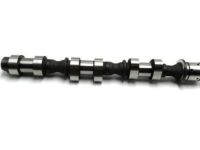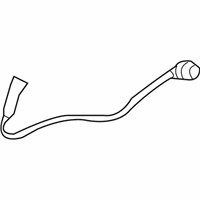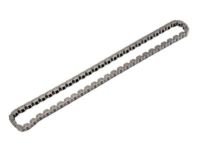Popular OEM GMC Acadia Parts
- Body & Hardware Parts View More >
- Steering Parts View More >
- Electrical Parts View More >
- Air & Fuel Delivery Parts View More >
- Engine Parts View More >
- Belts & Cooling Parts View More >
- Suspension Parts View More >
- Driveline & Axles Parts View More >
- Emission Control & Exhaust Parts View More >
- Transmission Parts View More >
- Brakes Parts View More >
- Headlights & Lighting Parts View More >
Why Buy Genuine GMC Acadia Parts From ChevyPartsGiant.com
Looking for real GMC Acadia parts? ChevyPartsGiant.com may be a better choice to find genuine parts at wallet-friendly prices. We sell only OEM GMC Acadia parts, ensuring perfect fit, reliability, and long-term performance. With our website, you can easily get access to the same parts found at local GMC stores. All components are produced by GMC and are exclusively fitted on GMC Acadia automobiles. By shopping at our store, you can enjoy the quality of the GMC factory without the high prices of brick-and-mortar facilities. We achieve this because we are an online store operating at lower costs, which we pass on to you. We also have a user-friendly platform where you can find and order genuine GMC Acadia parts swiftly. We are here to make your process of restoring a GMC Acadia or dealing with simple repairs quick and inexpensive. We also make it easy to obtain GMC Acadia parts at competitive shipping prices and a team of knowledgeable staff ready to take your order. Choose ChevyPartsGiant.com to save time and money, as well as keep your GMC Acadia in the good condition.
Since its original launch General Motors has evolved the GMC Acadia crossover SUV into a single product through the elimination of several GMC vehicles which held 7 to 8 passenger seating. The GMC Acadia made its debut in 2006 and quickly became a popular choice in the crossover SUV segment. Any early engineering challenges were addressed promptly by General Motors. The vehicle delivers improved driving quality with its MacPherson independent front suspension and independent rear suspension units. GMC produced the 2017 second-generation Acadia with a reduced size by shortening the vehicle to 193.6 inches and reducing width to 75.4 inches through high-strength steel applications to maintain durable chassis properties. Customers choosing the GMC Acadia can select from two engine options because it features a base 2.5-liter four-cylinder engine with 194 horsepower and a higher-spec 3.6-liter V6 engine which delivers 310 horsepower. Both engines work with a nine-speed automatic transmission. The regular front-wheel drive system provides all-wheel drive capability through the GKN Driveline dual-clutch system as an upgrade. The GMC Acadia achieves a lower roll-over-resistant design while delivering a high-tech interior with easy-to-use controls and wireless connectivity of Apple CarPlay and Android Auto features. The optimal performance of GMC Acadia vehicles demands high-quality original parts that use materials designed specifically for durability and precise fit along GMC's official specifications to achieve simple installation.
GMC Acadia issues cluster in transmission power delivery, engine valve timing, and evaporative emissions. In the drivetrain, the Acadia may lose reverse or shift harshly under load. A fractured 35R clutch wave plate upsets pressure and triggers gear slip. Common codes include P0716, P0776, P0717, and P0777. Rebuild the unit, replace damaged components, remove debris, and relearn adaptives for the Acadia. In the engine system, timing faults reduce power and idle quality on the GMC Acadia. Codes P0011 and P0014 indicate correlation errors or excess end play at a camshaft. Update the powertrain control module where applicable, verify oil condition, and confirm phaser response with scans. If correlation drifts, perform mechanical inspection and correct guides as needed. For emissions, the GMC Acadia may display a light after refueling or weather swings. A worn or loose gas cap leaks vapor and delays readiness. Install a new cap, inspect the filler neck, and complete a full drive cycle. Finish with a road test so the Acadia shifts cleanly and holds steady temperature. Use GMC service data to verify codes, fluid levels, and transmission temperatures.
GMC Acadia Parts Questions & Answers
- Q: How to replace the left side camshaft on GMC Acadia?A:To replace the left side Camshaft get both the en-48313 Timing Chain retention tool (EN-48313) and en 46111 Crankshaft rotation socket (EN 46111). The procedure to replace the side Camshaft starts with removing the lower Intake Manifold and then proceeding to the left bank Camshaft cover. The second step involves removing both the Camshaft sensors together with the Camshaft position actuator solenoid. The en 46111 will rotate the Crankshaft to achieve Camshaft neutrality while both Camshaft flats align perpendicular to the Camshaft cover rail. An open-end wrench should be placed at the Camshaft hex point to stop it from rotating then you can loosen the Camshaft position actuator bolt. Use the en-48313 by unscrewing its legs before sliding it between the Camshaft actuators while keeping the scribed line next to the cylinder head. Extend the legs of en-48313 partially until one leg reaches behind the Timing Chain guide before continuing the expansion to contact the chain without torque. Operate the en-48313 by hand until the camshafts meet each other to produce chain slack. Begin the process by marking the Timing Chain together with Camshaft position actuators for correct reassembly before uninstalling the Camshaft position actuator bolt and the camshafts. Installation requires correct alignment between Camshaft position actuator and Timing Chain marks before installing the Camshaft actuators to the camshafts with Camshaft bearing caps. Begin by removing en-48313 while using an open-end wrench for prevention of rotation and proceed to correctly install and tightly fasten the Camshaft position actuators. Afterward install the intake Camshaft position actuator solenoid together with Camshaft sensors and Crankshaft balancer and Camshaft cover and lower Intake Manifold.
- Q: How to replace the Knock Sensor for Bank 1 on GMC Acadia?A:Begin replacement of Bank 1 knock sensor by removing the exhaust manifold lower heat shield initially. First detach the engine wiring harness electrical connector from the bank 1 knock sensor. Before removing the knock sensor you must loosen the bolt that secures it. Position the new knock sensor then use a torque wrench to apply 23 Nm (17 lb ft) to the knock sensor bolt. The procedure requires connecting the engine wiring harness electrical connector to the bank 1 knock sensor and reinstalling the exhaust manifold lower heat shield after completion.
- Q: How to replace the RH secondary camshaft timing chain on GMC Acadia?A:Starting the right Timing Chain replacement requires Spark Plug removal for Crankshaft rotation and engine front cover detachment. Strategically remove the right bank Timing Chain Tensioner followed by both the right bank Timing Chain shoe and guide before completing with the right bank Timing Chain itself. Start by fitting the right bank Timing Chain then install the guide before putting on the right bank Timing Chain shoe and tensioner. Return to service by replacing engine front cover and spark plugs.
- Q: How to Change the Shift Knob on a GMC Acadia?A:The first step to changing the acadia's Shift Knob involves applying the parking brake followed by removal of the floor console left extension panel. Disconnect the transmission tap up/tap down switch electrical connector then rotate the key into run position without engine activation. A thin flat-bladed tool should be gently inserted between trim ring and Shift Knob layers to ease the trim ring off the Shift Knob because these pieces will separate by approximately 13.0 mm (0.5 in). Only after screwing out the Shift Knob screw can you safely guide the transmission tap up/tap down switch electrical harness and connector above the shift control indicator when removing the Shift Knob from the shift control lever. To assemble the Shift Knob users must apply p/n 88861426 lubricant to the shift control lever tip followed by proper electrical harness guidance when putting the Shift Knob in place onto the shift control lever. Secure the knob screw by tightening it to 4 n.m (35 lb in). The Shift Knob trim ring needs lifting until you hear a clicking sound to show proper mounting to the Shift Knob. After this set the shift control lever to park position and turn off the key. Check the transmission tap up/tap down switch electricity and verify shift control operation through all ranges before installing the floor console left extension panel along with brake release.




















































